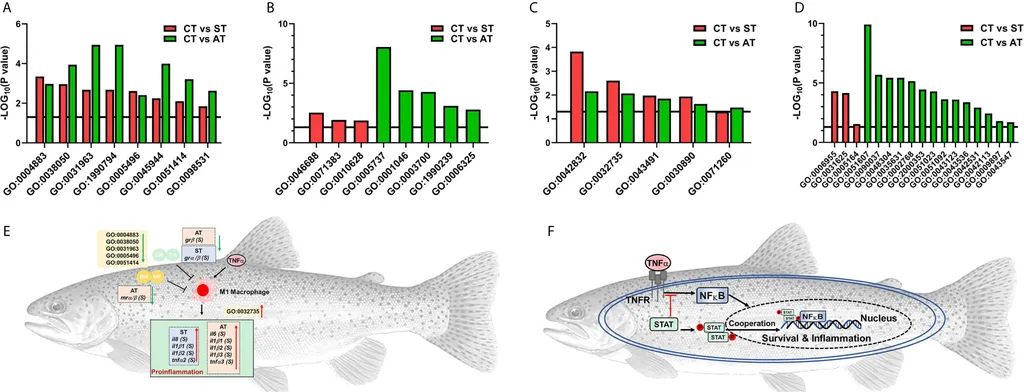In the ever-changing world of aquaculture, understanding how fish respond to environmental stress is crucial for maintaining healthy stocks and ensuring sustainable production. A recent meta-analysis published in *BMC Genomics* has shed new light on the molecular mechanisms that rainbow trout (Oncorhynchus mykiss) use to cope with heat and hypoxic stress, offering valuable insights for the aquaculture industry.
Rainbow trout, a commercially important species, often face physiological stress due to environmental challenges. While previous studies have explored individual stress responses, this meta-analysis, led by Sayed Mashequl Bari from the Department of Aquatic Animal Health Management at Sher-e-Bangla Agricultural University, takes a comprehensive approach by analyzing four public RNA-Seq datasets. The goal? To identify common genes and pathways that drive the trout’s adaptation to these stresses.
The study identified 1,006 differentially expressed genes (DEGs), with 555 upregulated and 451 downregulated. Among these, five genes—cdkn1ba, znf395a, klf9, irs2b, and tsc22d3—were commonly regulated under both stress conditions, suggesting their pivotal roles in maintaining cellular homeostasis.
“These genes are like the conductors of an orchestra,” Bari explains. “They help orchestrate the trout’s response to stress, ensuring that the cellular processes remain balanced and functional.”
The meta-analysis also revealed that heat shock protein (hsp) family genes and hypoxia-inducible factor (HIF) genes were highly regulated. Gene ontology (GO) enrichment analysis showed that the DEGs were primarily associated with the cell cycle, DNA metabolic processes, catalytic activity, and membrane components. Pathway enrichment further indicated coordinated activation of protein processing in the endoplasmic reticulum, p53-mediated cell-cycle arrest, FoxO signaling, and oxidative stress responses.
So, what does this mean for the aquaculture industry? Understanding these conserved gene expression patterns and key regulatory pathways can help in developing strategies to enhance stress resistance in rainbow trout. This could lead to more resilient fish stocks, improved production yields, and ultimately, a more sustainable aquaculture sector.
“By identifying these core programs for proteostasis and damage control, we can better prepare our fish for the environmental challenges they face,” Bari notes. “This is not just about understanding the science; it’s about applying it to make a real difference in the industry.”
As the aquaculture sector continues to grow, so too does the need for innovative solutions to the challenges it faces. This meta-analysis provides a significant step forward in that regard, offering a deeper understanding of how rainbow trout adapt to stress and paving the way for future developments in stress-resistant aquaculture practices.

